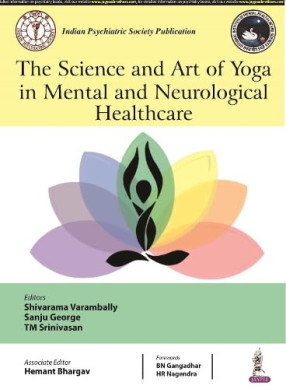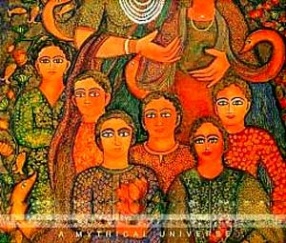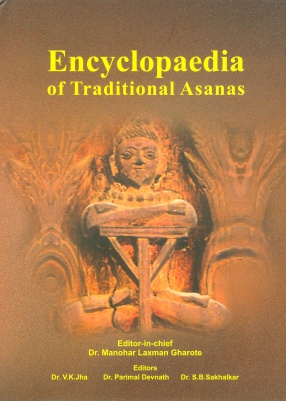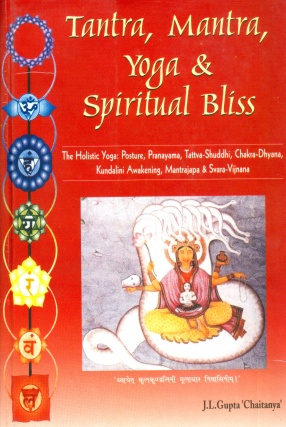The Science and Art of Yoga in Mental and Neurological Healthcare
This book, The science and art of yoga in Mental and neurological healthcare, attempts to bring the reader abreast of these developments and presents a comprehensive as well as practical approach to the use of yoga as a therapeutic approach in psychiatric and neurological disorders.
Foreword:
The word "Yoga" was first mentioned in the oldest sacred Indian test Rig Veda. The yogic tradition in India can be traced back to the Indus-Saraswati Valley Civilization in Northern India over 5000 years ago. However, it was systematized as a practice by the great sage Maharishi Patanjali through his Patanjall Yoga Sutras. Earlier, it was considered to be a mystic practice only for saints and sages who were detached from worldly desires. With changing times, this tradition of yoga is now being accepted by a wide majority of people and has achieved worldwide acceptance. Apart from Patanjali Yoga Sutras (calling it as Raja Yoga), Swami Vivekananda brought out the other three dimensions of Yoga as Jnana Yoga based on Upanishadic wisdom base, Bhakti Yoga based on Narada Bhakti Sutras and Karma Yoga using the teachings in Bhagavad Gita. From the taboo of a mystic practice, yoga is now considered as a science of holistic living to achieve health and wealth, happiness and bliss, as also efficiency, peace and poise. The benefits of yoga are well recognized, and it has widespread applications to meet the challenges of our modern era including therapeutic indications.
The National Institute of Mental Health and Neuro Sciences (NIMHANS) is pioneer in research pertaining to the field of neurosciences. It is indeed exciting that an "Institute of National Importance" has come forward with evidence to support this age-old Indian tradition. This would be a new beginning in the field of integrative medicine which can help lessen the bridge between modern medicine and traditional systems of medicine in India.
In this book, The Science and Art of Yoga in Mental and Neurological Healthcare, the authors have taken great effort to bring forth the scientific evidence of integrated approach of yoga therapy in most of the mental health and neurological conditions. Most of the psychotherapeutic approaches followed in India have been adapted from western literature based on the evidence base. An attempt to have systematic evidence for an indigenous psychotherapeutic approach-like yogic counseling may help in overcoming many hurdles that we face in the field of psychotherapy in India today. It must be noticed that yoga in its entirety is included as a therapy by including even the role of yogic counseling in such conditions.
A section of the book, "Neurobiological Dimensions, has been dedicated to explain in detail the brain correlates and the proposed mechanism of action of bringing balance at all levels by yoga definitely gives the readers a keen interest in knowing Yoga in relation to the neurophysiological changes in the brain and the psycho-neuro-immunological axis (PNI axis). Further on, in section "Yoga for Clinical Conditions", each disorder has been individually described in separate chapters in the light of both yogic knowledge and modern science with a Case Vignette at the end. Each chapter displays a comprehensive compilation of the existing evidence of yoga practices in various disorders, especially the non-communicable diseases (NCDs), which gives an insight into the type of practices that may be of relevance for that particular illness. Interestingly, each chapter also has a part on "Yoga Clinical Insights" which emphasizes the practical challenges and difficulties that the therapist may face while dealing with this section of patients. This is particularly of great value to yoga therapists that will give them a clear picture of what are the Do's and Don'ts in each set of patients.
Apart from explaining the theoretical aspect of yoga, the special yoga practices that have been proven to be effective for various illnesses have been compiled to individual modules for each illness in the Appendix of the book. It has been tabulated with specific details of the asanas, the number of repetitions and the time spent in each pose which has been sequenced according to the Yoga experts. Special and advanced techniques including kriyas, breathing practices, pranayama, meditation, practices of emotion culture, etc., taking into consideration the needs of each age group have been presented accordingly. These modules can provide a template for yoga therapists throughout India and abroad to modify their practices according to the needs of their clients. It can also be evolved as a textbook for medical practitioners.
The last section of the book focuses on Preventive and Health Promotive Aspects of Yoga with chapters on "Yoga for Caregivers", "Yoga for Positive Mental Health", and "Tele-Yoga in Mental Health". The chapter on Tele-Yoga provides the way ahead and makes us realize the immense advantage of technology which is a boon in these days of COVID-19. This online platform for yoga therapy can help in overcoming many hurdles patients face in terms of transportation, supervision and convenience, so that the advantages of this practice can be imparted to a greater audience.
In summary, Yoga, which is an immortal cultural outcome of India, has now become a subject of scientific curiosity paving ways to new discoveries and treatment of various illnesses. The book would definitely be a great addition to the knowledge of integrative medicine and would serve as an important easy to use handbook for yoga therapists dealing with patients suffering from common psychiatric and neurological conditions. The editors should be credited for their efforts to produce a comprehensive manual on collating the knowledge of the Science and Art of Yoga in Mental and Neurological Healthcare.
Get it now and save 10%
BECOME A MEMBER











Bibliographic information
Sanju George
TM Srinivasan
Ors.